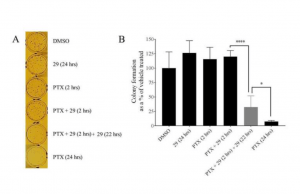DALLAS (SMU) – Are bias response teams political correctness police on college campuses? Or are they a quick fix for dealing with prejudice and bias?
In an opinion piece in Inside Higher Ed, a team of professors, including Southern Methodist University’s S. Kiersten Ferguson, argues that the truth is more complex.
They note that bias response teams — which handle reports of incidents that may involve prejudice from students, faculty or staff — are well-intentioned but often lack sufficient resources and time to carry out their charges. And they often get caught in the middle of demands from two different groups, neither of which they are typically able to fully satisfy.
Read the story here.
EXCERPT:
By Ryan A. Miller, Tonia Guida, Stella Smith, S. Kiersten Ferguson and Elizabeth Medina
Inside Higher Ed“University of Michigan brings back the Soviet Union with its bias response team,” the conservative-libertarian website The College Fix announced last spring. Similar headlines have warned that such teams punish free speech and are the latest example of political correctness run amok in higher education.
Claims that bias response teams function as the thought police on campuses are false. The truth about these teams is more complex, and less nefarious, than headlines acknowledge. Through our research, including an article we published in The Review of Higher Education, we’ve sought to understand the purpose and functions of bias response teams from the perspectives of administrators who run them at 19 colleges throughout the nation.
Misconceptions about bias response teams abound. What do these teams generally do? They:
- Receive reports of incidents that may involve prejudice from students, faculty and staff;
- Reach out and seek to support those who file reports;
- Engage those who were the subjects of reports in voluntary, educational conversations; and
- Monitor trends in the campus climate to inform educational efforts.
They also refer incidents that go beyond the scope of the team’s purview — crucially, those that involve institutional policy violations or criminal acts — to the professionals on the campus who are already designated to handle them, such as student conduct offices or campus police.
What do bias response teams not do? In the vast majority of cases, they do not have the power to discipline or sanction any campus community member. Bias response teams generally adopt a nonregulatory approach. They do not shut down free speech or charge into classrooms to stop offensive statements from faculty members or students. A federal judge in the University of Michigan case brought by Speech First affirmed as much, remarking “The university considers this voluntary and the student has no obligation to come in.”
About SMU
SMU is the nationally ranked global research university in the dynamic city of Dallas. SMU’s alumni, faculty and nearly 12,000 students in seven degree-granting schools demonstrate an entrepreneurial spirit as they lead change in their professions, communities and the world.




